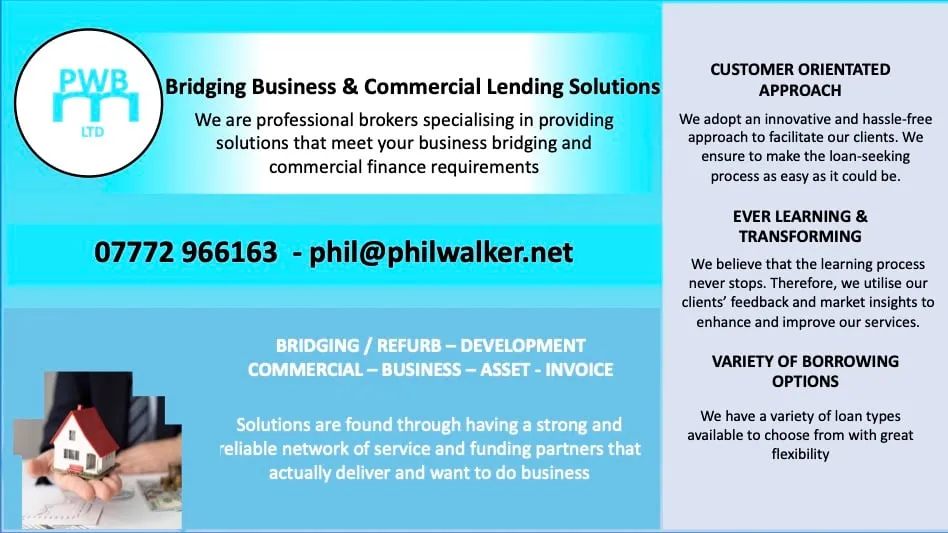
07772 966 163 - [email protected]

Bridging / Refurb / Development / Commercial / Business / Asset / Invoice
Solutions are found through having a strong and reliable network of service and funding partners that actually deliver and want to do business
© 2022 PW. All Rights Reserved.